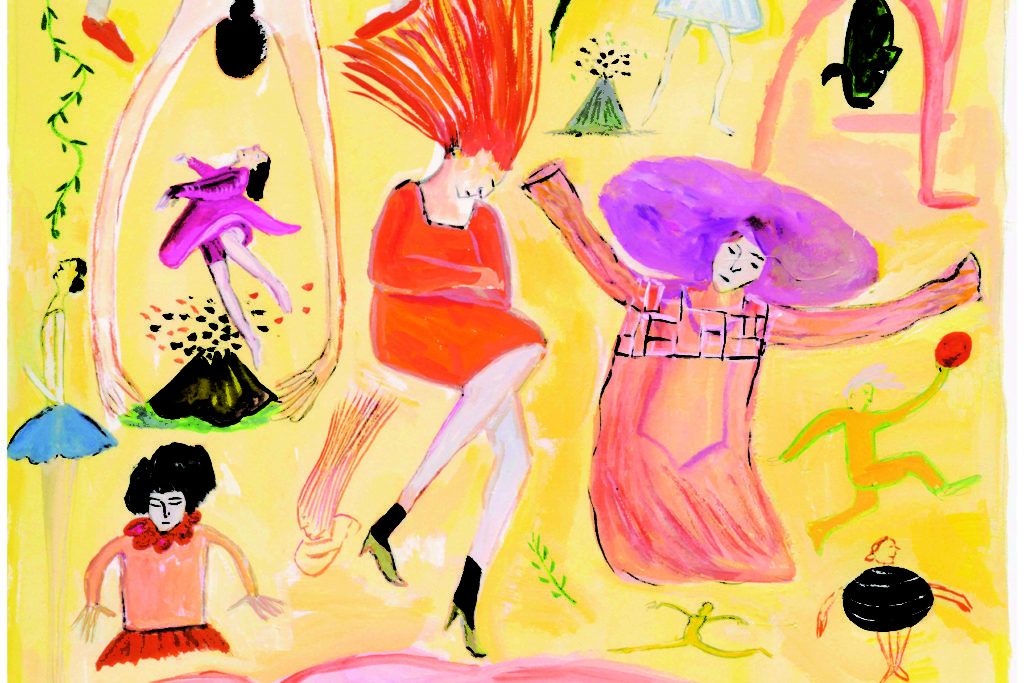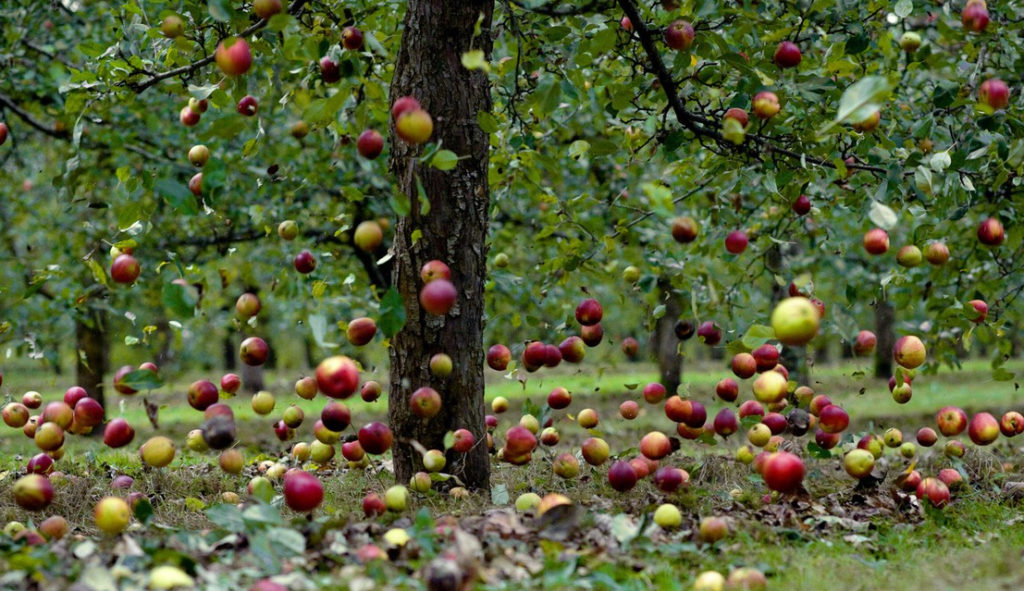Knowing the Truth of It

“Let me be perfectly clear that in order for you to take the Buddhist approach [to finding meaning and joy in the face of suffering], it is not necessary for you to adopt a creed, sacrifice your religion, or transform yourself into some new person.
“You simply must have faith in the possibility that understanding your suffering can bring about a radical change in how you experience life. In other words, you must suspend your doubt long enough to see for yourself what you are capable of realizing.
“At the same time, you should not underestimate this challenge, as it demands that you voluntarily show up for your own suffering with no agenda other than knowing the truth of it.”
— from Dancing with Life: Buddhist Insights for Finding Meaning and Joy in the Face of Suffering,
by Phillip Moffitt
A Feeling of Aliveness

“The Buddha’s twelve insights of the Four Noble Truths is a teaching of the wisdom that is to be found in being consciously and fully present with your suffering until what is called ‘pure awareness’ or ‘Buddha nature’ or ’emptiness’ that lies beyond your personality is revealed. It points to the opportunity you have to make a radical inner shift in how you view your existence.
“Whatever the source of your suffering may be, this inner shift will provide a new, deeper context for interpreting your experiences that brings clarity and equanimity to your mind. The result of this inner transformation is that your life — with all its pain, disappointment and uncertainty, as well as all that you cherish, love, and work hard for — is radically enriched.
“You will discover, as so many other have before you, a feeling of aliveness, something mystical, palpable in your daily life. You may have a long journey to your final and full liberation, but peace and freedom of mind are available to you right now in ever-increasing measure.”
— Dancing with Life: Buddhist Insights for Finding Meaning and Joy in the Face of Suffering,
by Phillip Moffitt
It Happens by Itself. But You Have to Be There.

“Mindfulness meditation strengthens the mind so that you can more easily be with difficult emotions or uncomfortable physical sensations that cause your mind to abandon the present moment. Mindfulness also strengthens the nervous system such that physical and mental pains don’t have the same degree of ‘hurt’ because the mind isn’t contracting in anticipation of more pain in the future.
“For the first few years of practice you are literally reprogramming your nervous system to free it from habitual reactivity. This alone will bring much ease and flexibility to your mind.
“The most life-changing benefits of mindfulness meditation are the insights, which arise spontaneously, the way a ripened apple falls from the tree of its own accord.
“Insight is what changes your life. Through insight you realize what brings well-being to yourself and others as well as what brings stress, discomfort, and dissatisfaction into your life. Such insights can be small or quite dramatic. Moreover, they have a cumulative effect such that previous insights become building blocks for still more insights….
“During meditation, you will most often have personal insights about your life and how it has been conditioned. Such insights help you grow and understand yourself better, leading to a fuller life…
“Less frequent, but having far greater impact when they arise, are the insights about the nature of life itself. These are universal insights about the ever-changing and impersonal nature of your life experiences… Not-self and the constancy of change are basic characteristics of life, but the truth of them, in the sense of being life altering, can only be known through direct insight, which come from mindfulness.”
— from Dancing with Life: Buddhist Insights for Finding Meaning and Joy in the Face of Suffering,
by Phillip Moffitt
Three Kinds of Happiness

The topic of my next 5-week Study & Practice class series will be the Three Kinds of Happiness, as described in Phillip Moffitt’s Dancing with Life: Buddhist Insights for Finding Meaning and Joy in the Face of Suffering (which will be our reference text).
These three kinds of happiness are:
- “The happiness that arises when conditions in your life are what you desire them to be
- “The well-being that comes when your mind is joyful and at ease, regardless of the conditions of your life at the moment
- “The unbounded joy you feel when your mind has reached final liberation from all clinging”
*** This is an intermediate-level course suitable for meditators who are interested in a deeper understanding of their relationship to the conditions of life, as well as an overview of the samadhi meditation practice that leads to deep states of mental absorption (jhana), and the Insight Meditation practice (vipassana) that leads to liberation. ***
When: Tuesday evenings, Sept 17 to Oct 15, 7:00 to 8:30 pm
Where: First Unitarian Church of St. Louis, 5007 Waterman (at Kingshighway)
Each session will include instructions plus 20-30 minutes of silent meditation and time for discussion. The classes are offered on a dana (generosity) basis. To register, there is an initial $20 fee, which pays for room rental and helps to cover the costs of maintaining this DharmaTown website.
For more information and to register, e-mail me, Jan Rosamond, here.

*** My teaching credentials: I have completed four years of training through Spirit Rock, where I am certified as a Community Dharma Leader. I’ve practiced in the Western Insight tradition for more than 20 years with a variety of teachers including Jack Kornfield, Joseph Goldstein, Sharon Salzberg, and many others. I’ve spent more than 500 days on silent retreat including several 1- and 2-month intensive retreats in the U.S., South Africa, and Burma (Myanmar). My mentoring teacher is Phillip Moffitt. ***
The Opposite of “Racist” Isn’t “Not Racist”

I was so moved — and enlightened — by Ibram X. Kendi’s “Stamped from the Beginning: The Definitive History of Racist Ideas in America,” (which I posted about here) that as soon as I heard he was coming out with a follow-up book — “How to Be an Antiracist” — I pre-ordered it.
And now, finally, it’s here. It arrived on my Kindle yesterday. And I can’t put it down.
It begins with Kendi describing his own unwitting racism. (Kendi is Black.) He write:
“I was a dupe, a chump who saw the on-going struggles of Black people and decided that Black people themselves were the problem. This is the consistent function of racist ideas — and any kind of bigotry more broadly: to manipulate us into seeing people as the problem, instead of the policies that ensnare them..
“The good news is that racist and antiracist are not fixed identities. We can be a racist one minute and an antiracist the next. What we say about race, what we do about race, in each moment, determines what — not who — we are.
“I used to be racist most of the time. I am changing. I am no longer identifying with racists by claiming to be ‘not racist.’ I am no longer speaking through the mask of racial neutrality. I am no longer manipulated by racist ideas to see racial groups as problems…
They Are Kissing.

An untrained mind obscures the natural qualities of heart. As the mind becomes more clear and the heart lets loose of the constrictions created by the roughness of life, awareness can flow without judgement.
This does not mean without discernment. Discernment leads to wisdom. Awareness is the essence of discernment, but it does not reject anything.
Judgement leads to separation. Comparing leads to separation. But discernment includes everything.
A well-trained mind, collected and unified, sees the dance of opposites. The heart blossoms and the opposites unite.
The moon and sun: Kiss.
This is within you. Your sun. Your moon.
You are what you want.
***
(adapted from Awakening through the Nine Bodies, by Phillip Moffitt)
This Doesn’t Work

“The Buddha came to the following realization: the path to happiness and a sense of well being in this very life lies not in avoiding suffering but in using the conscious, embodied, direct experience of it as a vehicle to gain deep insight into the true nature of life and your own experience.” — from Dancing with Life, by Phillip Moffitt
What, Perhaps, Joy Is

I was just getting ready to post this lovely little delight from Ross Gay’s Book of Delights (thank you again, Brian) when I got a text (thank you Carrie!) alerting me to the recent On Being podcast, in which this very same Ross Gay responds to the question: “How can we be joyful in a moment like this?” by saying “How can we not be joyful, especially in a moment like this?” and then goes on to say that joy has nothing to do with ease and “everything to do with the fact that we’re all going to die.”
Read the selection I had planned for today (below) and if you want more (which how could you not?!?), listen to the podcast, titled: Tending Joy and Practicing Delight.
“Joy Is Such a Human Madness”: The Duff Between Us
by Ross Gay
“In healthy forests, which we might imagine to exist mostly above ground, and be wrong in our imagining, given as the bulk of the tree, the roots, are reaching through the earth below, there exists a constant communication between those roots and mycelium, where often the ill or weak or stressed are supported by the strong and surplussed.
“By which I mean a tree over there needs nitrogen, and a nearby tree has extra, so the hyphae (so close to hyphen, the handshake of the punctuation world), the fungal ambulances, ferry it over. Constantly. This tree to that. That to this. And that in a tablespoon of rich fungal duff (a delight: the phrase fungal duff, meaning a healthy forest soil, swirling with the living the dead make) are miles and miles of hyphae, handshakes, who get a little sugar for their work. The pronoun who turned the mushrooms into people, yes it did. Evolved the people into mushrooms.
“Because in trying to articulate what, perhaps, joy is, it has occurred to me that among other things — the trees and the mushrooms have shown me this — joy is the mostly invisible, the underground union between us, you and me, which is, among other things, the great fact of our life and the lives of everyone and everything we love going away. If we sink a spoon into that fact, into the duff between us, we will find it teeming. It will look like all the books ever written. It will look like all the nerves in a body. We might call it sorrow, but we might call it a union, one that, once we notice it, once we bring it into the light, might become flower and food. Might be joy.”
The Economy of Generosity

At the Study & Practice class last night, I explained that I set a registration fee for the class ($20), which is a fee-for-service arrangement that participates in our “normal” market economy (in which I collect a fee to cover the costs that I have to pay).
But I teach the class under an entirely different arrangement. It’s what Buddhist call the Practice of Dana, which I think of as an Economy of Generosity: I offer the teachings freely — as an expression of my love and appreciation for these teachings and for those who have taught me — and in doing so, I provide an opportunity for the people who are taking my class to participate in this same Economy of Generosity. By which I mean the opportunity for them to give freely (to me financially, yes, but in other ways too, such as to the class by participating whole-heartedly).
Or not.
Either way is OK with me. (That’s what makes it an Economy of Generosity.)
After the class, I got to talking with a friend about this idea of giving and receiving, and I recalled a book I read when I was in college that had a tremendous impact on me. The book is The Gift: Imagination and the Erotic Life of Property, by Lewis Hyde. (I had mis-remembered the title as: The Erotic Life of Generosity, which maybe says something about why it had such an impact on my understanding of generosity!)
My friend also mentioned a book about Art and Generosity, which had a big impact on him, and after looking around on Google, I think maybe this is the same book! It’s now called The Gift: Creativity and the Artist in the Modern World, and apparently it’s recently been re-published in a special twenty-fifth anniversary edition.
Here’s a sample from the Introduction (original 1983 edition), which now that I’m reading it with “Buddhist eyes,” has a whole other level of meaning:
“There are several distinct senses of ‘gift’ that lie behind these ideas, but common to each of them is the notion that a gift is a thing we do not get by our own efforts. We cannot buy it; we cannot acquire it through an act of will. It is bestowed upon us. Thus we rightly speak of ‘talent’ as a ‘gift,’ for although a talent can be perfected through an effort of will, no effort in the world can cause its initial appearance. Mozart, composing on the harpsichord at the age of four, had a gift.
“We also rightly speak of intuition or inspiration [and I would add: insight] as a gift. As the artist works [as the meditator practices], some portion of his creation [her insight] is bestowed upon him [her]. An idea pops into his head, a tune begins to play, a phrase comes to mind, a color falls in place on the canvas. Usually, in fact, the artist does not find himself engaged or exhilarated by the work, nor does it seem authentic, until this gratuitous element has appeared, so that along with any true creation comes the uncanny sense that ‘I,’ the artist, did not make the work. ‘Not I, not I, but the wind that blows through me,’ says D. H. Lawrence.” [The Buddhist teaching of Not-self!]
The first chapter of The Gift continues exploring the nature of gifts and giving:
“…a cardinal property of the gift: whatever we have been given is supposed to be given away again, not kept. Or, if it is kept, something of similar value should move on in its stead, the way a billiard ball may stop when it sends another scurrying across the felt, its momentum transferred. You may keep your Christmas present, but it ceases to be a gift in the true sense unless you have given something else away. As it is passed along, the gift may be given back to the original donor, but this is not essential. In fact, it is better if the gift is not returned but is given instead to some new, third party. The essential is this: the gift must always move. There are other forms of property that stand still, that mark boundary or resist momentum, but the gift keeps going.”
If We Pay Attention

Now that I’m back home, I’ve starting writing again in my “Goodwill” journal where, since this is my Year of Getting to Know Goodwill, I make note of whatever acts of kindness, friendliness, generosity, etc. that I notice during the day — whether done for me, or by me, or between other people.)
So in that spirit, for today’s post I offer this entry from The Book of Delights, by Ross Gay:
“Something I’ve noticed riding on Amtrak trains, like the one I’m on right now between Syracuse and Manhattan, is that people leave their bags unattended for extended periods of time. Maybe they go to the end of the car to use the bathroom, or sometimes they go to the far end of the train to the cafe, which smells vomity like microwave cheese. My neighbor on this train — across the aisle and one row up — disappeared for a good twenty minutes, her bag wide open, a computer peeking out, not that I was checking. She is not unusual in this flaunting of security, otherwise know as trust, on the train. Nearly everyone participates in this practice of trust, and without recruiting a neighbor across the aisle to ‘keep an eye on my stuff while I use the restroom,’ which seems to be a coffee shop phenomenon. Trusting one’s coffee shop neighbor, but not the people in line, et cetera.
“I suppose, given the snugness of a train, especially if it’s full, one might speculate there’s a kind of eyes-on-the-street-ness at play, although it seemed to me, this morning, when I was first leaving my valuables on my seat for pilfering, my laptop and cellphone glittering atop my sweatshirt and scarf, most everyone was sleeping and so provided little if any eyewitness deterrent.
“I suppose I could spend time theorizing how it is that people are not bad to each other, but that’s really not the point. The point is that in almost every instance of our lives, our social lives, we are, if we pay attention, in the midst of an almost constant, if subtle, care taking. Holding open doors. Offering elbows at crosswalks. Letting someone else go first. Helping with the heavy bags. Reaching what’s too high, or what’s been dropped. Pulling someone back to their feet. Stopping at the car wreck, at the struck dog. The alternating merge, also known as the zipper. This care taking is our default mode and it’s always a lie that convinces us to act or believe otherwise. Always.”
***
He’s right. It’s become clear to me — now that I’m paying attention — that we are all swimming in a sea of goodwill.
